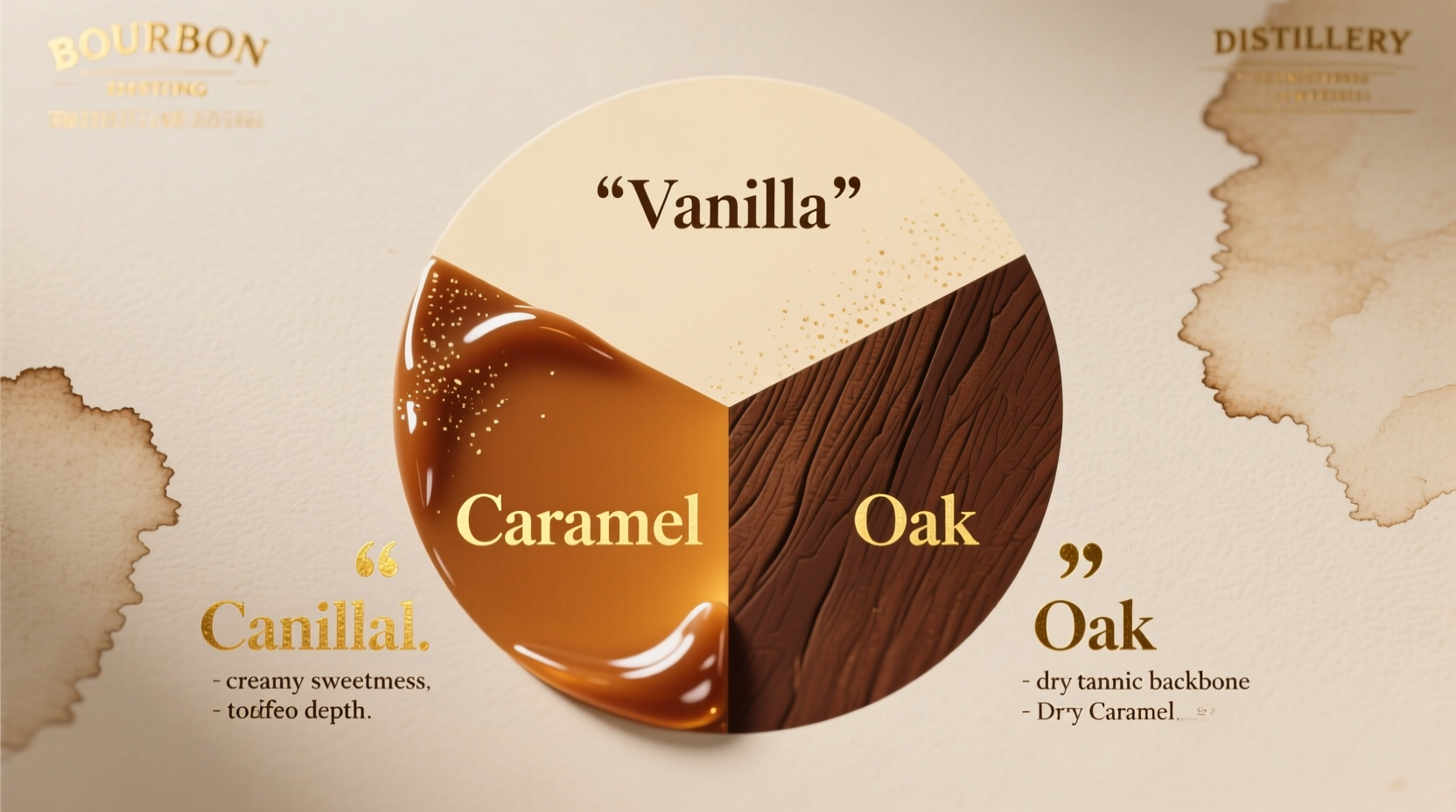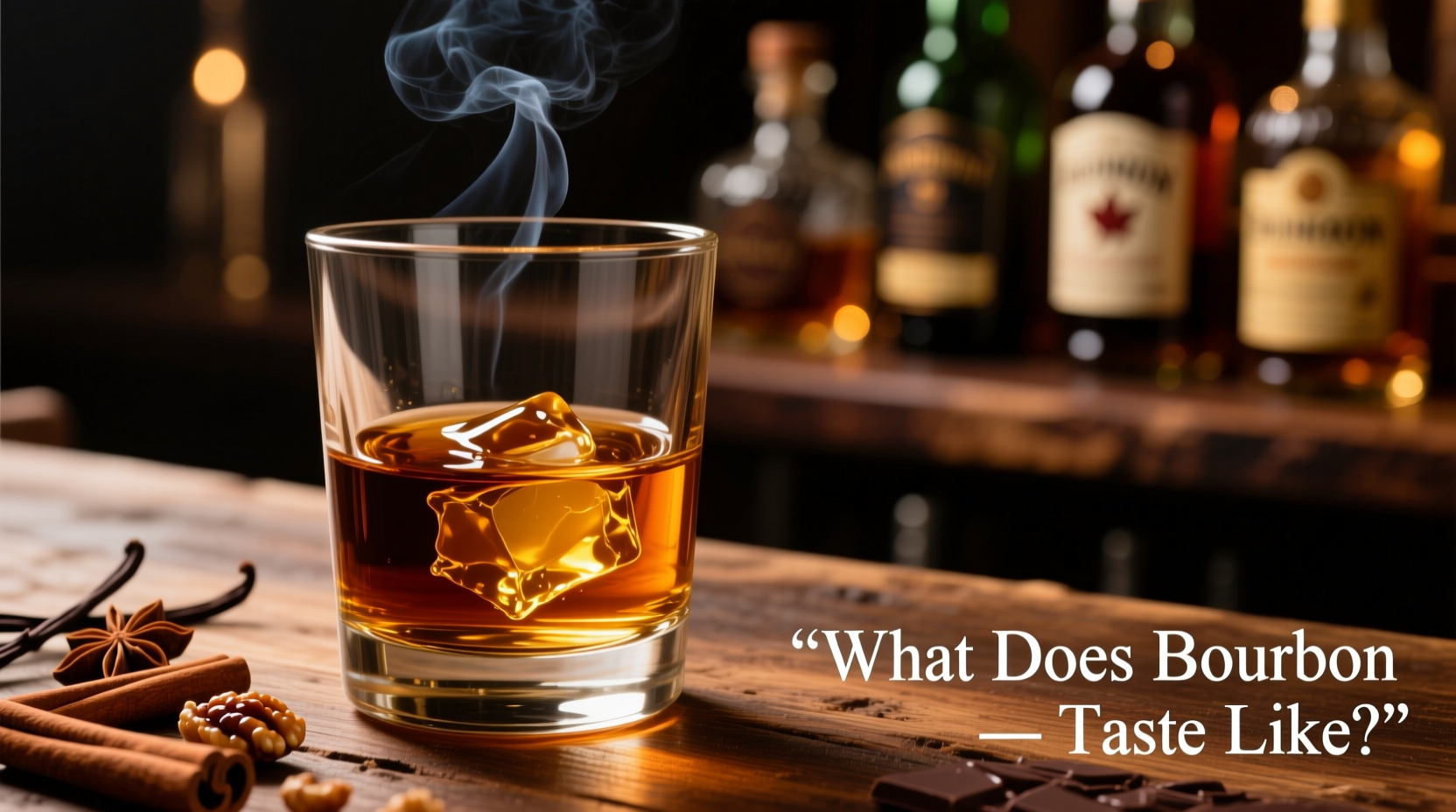Ever wondered what gives bourbon its distinctive flavor profile that sets it apart from other whiskeys? Understanding bourbon's taste isn't just about recognizing notes of vanilla and caramel—it's about appreciating the craftsmanship behind America's native spirit. Whether you're a curious beginner or looking to refine your palate, this guide breaks down exactly what bourbon tastes like and why, so you can confidently select bottles that match your preferences.
The Core Bourbon Flavor Profile: What You'll Actually Taste
When you take your first sip of bourbon, you're experiencing a carefully crafted symphony of flavors developed through specific production methods. Unlike other spirits, bourbon's taste is governed by legal requirements that directly influence its flavor profile.
According to the Alcohol and Tobacco Tax and Trade Bureau (TTB), bourbon must be made from a grain mixture that's at least 51% corn and aged in new charred oak containers. This legal definition directly shapes bourbon's signature sweet profile. The high corn content creates a foundation of sweetness, while the charred oak barrels contribute those characteristic vanilla and caramel notes through chemical reactions during aging.
Most bourbons share these primary flavor components:
- Sweetness: From the corn mash bill, creating honey, butterscotch, and maple syrup notes
- Vanilla: From lignin breakdown in charred oak barrels
- Caramel/toffee: From the Maillard reaction during barrel aging
- Oak: Toasted, woody notes that increase with age
- Spice: Cinnamon, clove, and pepper notes from barrel char and grain components
What Shapes Bourbon's Unique Taste Profile?
Bourbon's distinctive flavor doesn't happen by accident—it's the result of specific production choices that master distillers use to craft each expression. Understanding these factors helps explain why no two bourbons taste exactly alike.
The Mash Bill: Your Flavor Foundation
The grain recipe (mash bill) is bourbon's flavor blueprint. While all bourbon must contain at least 51% corn, the remaining grains create significant taste variations:
- High-corn bourbons (70-80% corn): Noticeably sweeter with prominent caramel notes
- Rye-forward bourbons: Feature spicier profiles with more pepper and cinnamon
- Wheat-substituted bourbons: Softer, rounder profiles with subtle fruit notes
Barrel Aging: Where Magic Happens
The interaction between bourbon and new charred oak barrels creates most of bourbon's distinctive flavors. During aging, the spirit extracts compounds from the wood while mellowing and developing complexity.
According to research published in the Journal of Agricultural and Food Chemistry, the charring process creates a layer of caramelized wood sugars that directly contribute to bourbon's signature vanilla and caramel flavors. The longer bourbon ages (within optimal limits), the more pronounced these wood-derived flavors become—up to a point. Over-aging can lead to excessive oakiness that overwhelms other flavors.
| Aging Period | Flavor Characteristics | Common Tasting Notes |
|---|---|---|
| 2-4 years | Bright, vibrant, grain-forward | Corn sweetness, light vanilla, citrus, fresh oak |
| 5-8 years | Well-balanced, complex | Rich caramel, baking spices, dried fruit, toasted oak |
| 9+ years | Deep, woody, potentially over-oaked | Dark chocolate, leather, tobacco, pronounced spice, potential bitterness |
How to Taste Bourbon Like a Professional
Understanding what bourbon tastes like requires more than just taking a sip. Professional tasters follow specific techniques to fully appreciate bourbon's complexity. Here's how to conduct your own tasting session:
- Choose the right glass: A Glencairn glass or snifter concentrates aromas for better evaluation
- Observe the color: Deeper amber indicates longer aging and potentially more oak influence
- Nose before tasting: Gently swirl and inhale to identify initial aroma notes
- Take a small sip: Let it coat your mouth to experience the full flavor profile
- Add water if needed: A few drops can open up flavors in higher-proof bourbons
When tasting, focus on identifying these elements in sequence:
- Initial impression: What hits your palate first?
- Middle palate: How does the flavor develop as it moves across your tongue?
- Finish: What lingering flavors remain after swallowing?

Bourbon vs. Other Whiskeys: Understanding the Differences
While all bourbons are whiskey, not all whiskeys are bourbon. Understanding these distinctions helps clarify bourbon's unique taste profile:
- Bourbon vs. Tennessee whiskey: Both use similar production methods, but Tennessee whiskey undergoes charcoal filtering (Lincoln County Process) that creates a smoother, slightly mellower profile
- Bourbon vs. Rye whiskey: Rye must contain at least 51% rye grain, creating a spicier, drier profile with less sweetness
- Bourbon vs. Scotch: Scotch uses malted barley, often has peat smoke flavors, and ages in previously used barrels (typically ex-bourbon), resulting in lighter wood influence
- Bourbon vs. Irish whiskey: Typically triple-distilled for smoothness and made from a mix of malted and unmalted barley, creating a lighter, fruitier profile
Decoding Common Bourbon Tasting Notes
When bourbon experts describe flavors, they're often referencing specific chemical compounds created during production. Understanding what these tasting notes actually mean can transform your drinking experience:
Vanilla Notes
The most common bourbon flavor note comes from vanillin, a compound released from the oak barrels during aging. Higher char levels on barrels increase vanillin extraction. This isn't artificial flavoring—it's a natural product of the aging process.
Caramel and Toffee
These sweet notes develop through the Maillard reaction (non-enzymatic browning) as the bourbon interacts with the caramelized wood sugars in charred barrels. The longer the bourbon ages within optimal parameters, the more pronounced these notes become.
Spice Notes
That cinnamon, clove, or pepper sensation comes from several sources: the char level of the barrel, the rye content in the mash bill, and compounds like eugenol and cinnamaldehyde extracted from the wood. Higher proof bourbons often deliver more pronounced spice notes.
Fruit Notes
Surprisingly, many bourbons exhibit dried fruit characteristics like apple, pear, or cherry. These esters develop during fermentation and distillation. The specific yeast strain used significantly impacts these fruity notes.
How to Select Bourbons Based on Your Taste Preferences
Now that you understand bourbon's flavor profile, you can strategically select bottles that match your preferences:
- If you prefer sweet profiles: Look for high-corn mash bills (70%+ corn) and younger expressions (4-7 years)
- If you enjoy spice: Choose bourbons with significant rye content (rye-forward mash bills) and higher proofs (100+)
- If you like complex, mature flavors: Opt for bourbons aged 8-12 years with balanced oak influence
- If you're sensitive to strong alcohol: Try lower-proof bourbons (80-90 proof) or add a few drops of water to open flavors
Remember that personal preference is subjective—what tastes perfectly balanced to one person might seem too sweet or too oaky to another. The best way to discover your preferences is through systematic tasting of different bourbon styles.
Practical Tasting Tips for Everyday Enjoyment
You don't need to be a professional to appreciate bourbon's complexity. Try these practical approaches to enhance your everyday bourbon experience:
- Temperature matters: Slightly chilled bourbon (not ice-cold) preserves more flavor compounds than room temperature
- Water is your friend: Adding 1-2 drops of water per ounce can open up flavors in higher-proof expressions
- Let it breathe: Pour your bourbon and wait 5-10 minutes before tasting—this allows volatile compounds to mellow
- Compare side-by-side: Tasting two different bourbons together highlights subtle differences
- Keep a tasting journal: Note what you like and dislike to refine your preferences over time
Understanding what bourbon tastes like transforms casual drinking into a more intentional and enjoyable experience. By recognizing the factors that shape bourbon's flavor profile—from mash bill composition to barrel aging—you can make more informed choices and appreciate the craftsmanship behind each bottle.
Does bourbon taste like whiskey?
Yes, bourbon is a type of whiskey, but it has a distinct sweet profile with prominent vanilla, caramel, and oak notes due to its corn-based mash bill (at least 51% corn) and aging in new charred oak barrels. Compared to other whiskeys, bourbon tends to be sweeter and less smoky than Scotch.
Why does bourbon taste sweet?
Bourbon tastes sweet primarily because of its high corn content (minimum 51% by law). Corn creates natural sugars that translate to honey, butterscotch, and caramel notes. The charring process on new oak barrels also creates caramelized wood sugars that bourbon absorbs during aging, enhancing the sweet profile.
Does all bourbon taste the same?
No, bourbon flavor varies significantly based on mash bill composition, proof, aging duration, warehouse location, and distillation techniques. High-rye bourbons taste spicier, wheated bourbons are softer, and aging longer creates more pronounced oak notes. This diversity is why bourbon enthusiasts often describe it as having as much variation as wine.
How does aging affect bourbon's taste?
Aging transforms bourbon's flavor as it interacts with charred oak barrels. Younger bourbons (2-4 years) show brighter corn sweetness and lighter oak. Mid-aged bourbons (5-8 years) develop balanced caramel, vanilla, and spice notes. Older bourbons (9+ years) gain deeper wood influence but can become overly oaky if aged too long, potentially developing bitter notes that overpower other flavors.
Why does bourbon taste different from Scotch?
Bourbon tastes different from Scotch primarily due to grain composition and barrel requirements. Bourbon must contain at least 51% corn and age in new charred oak barrels, creating a sweeter profile with prominent vanilla and caramel notes. Scotch uses malted barley, often has peat smoke flavors, and ages in previously used barrels (typically ex-bourbon), resulting in lighter wood influence and potentially smoky characteristics.











 浙公网安备
33010002000092号
浙公网安备
33010002000092号 浙B2-20120091-4
浙B2-20120091-4